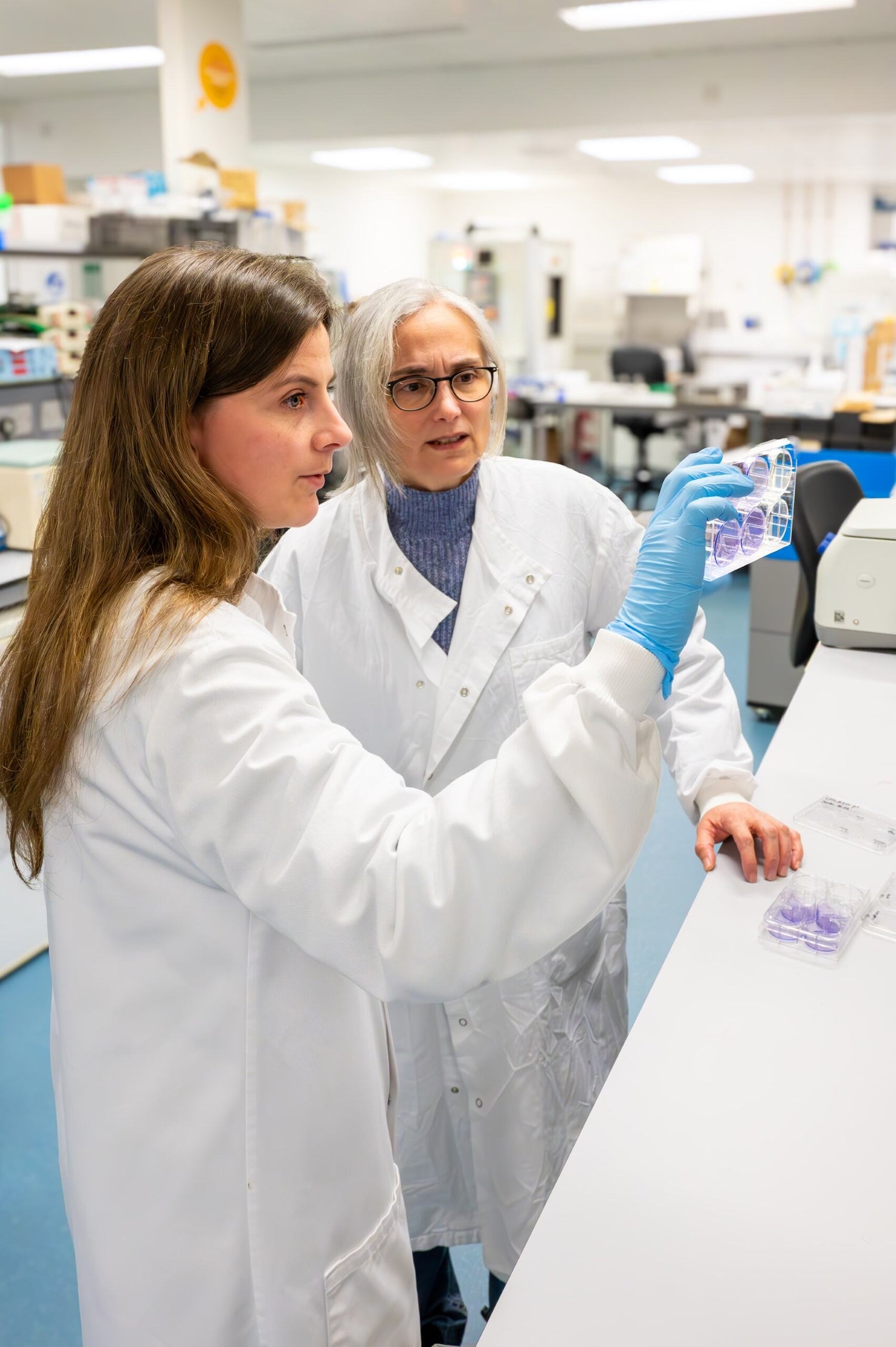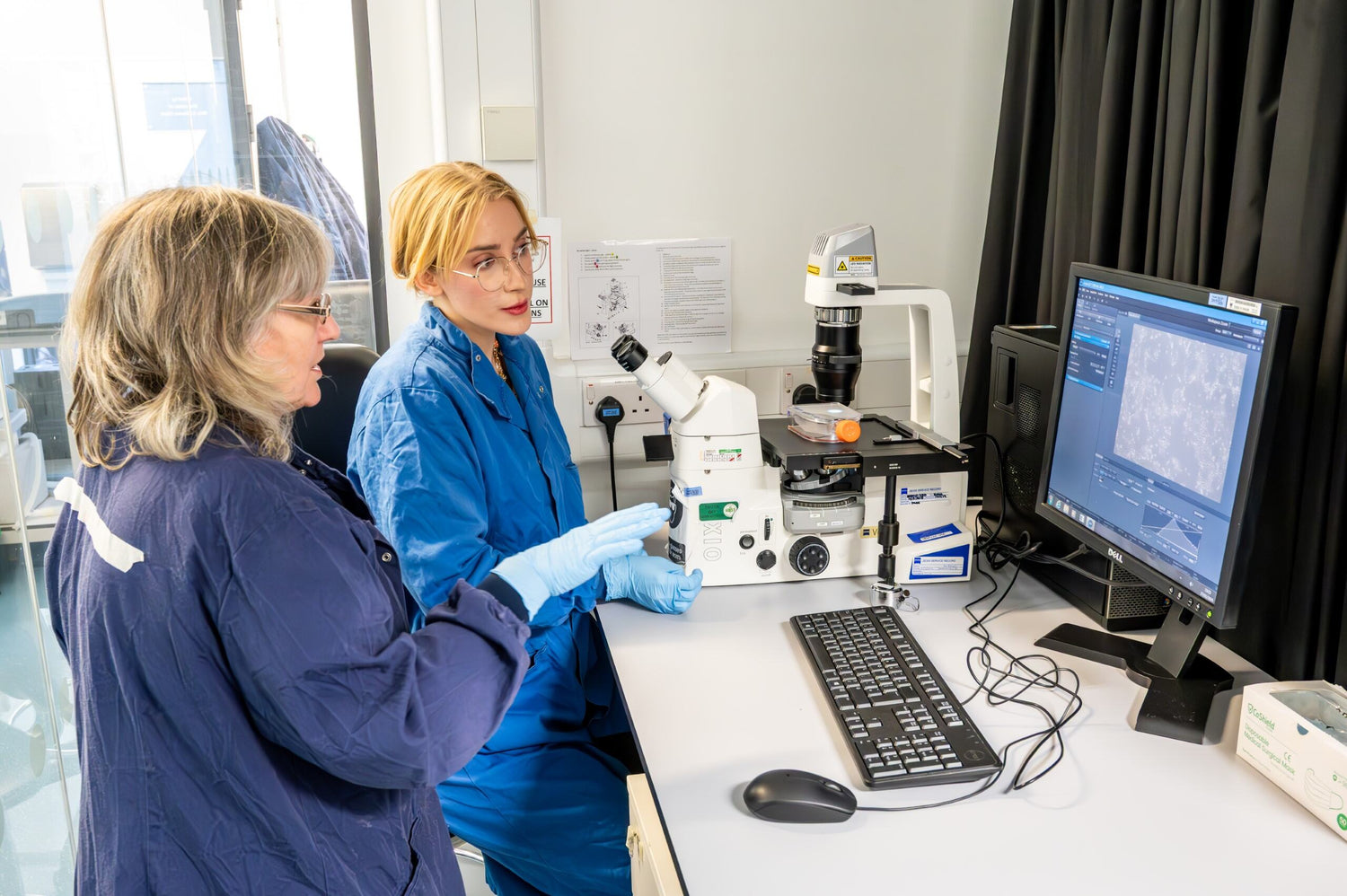Glioblastoma, IDH-wildtype

What is a glioblastoma?
Glioblastoma, IDH-wildtype, is the most aggressive and most common type of primary brain tumour in adults, with around 3,200 people diagnosed each year in the UK. It belongs to the glioma family – tumours that arise from glial cells, which support and protect nerve cells in the brain.
Unlike some other gliomas, glioblastomas – formerly known as glioblastoma multiforme or GBM – are highly aggressive, rapidly growing tumours that infiltrate surrounding brain tissue, making them especially challenging to treat. They also have a high likelihood of recurrence following treatment.
All glioblastomas are classified as grade 4 tumours under the World Health Organization (WHO) grading system. They are characterised as 'IDH-wildtype', meaning they lack mutations (changes in the DNA) in the IDH1 or IDH2 genes. This form is typically associated with more aggressive tumour behaviour and a poorer prognosis compared to gliomas that carry these mutations, such as astrocytoma, IDH-mutant, and oligodendroglioma, IDH-mutant.
What are the symptoms of a glioblastoma?
Symptoms of glioblastoma can vary depending on the tumour’s location in the brain, but common signs include:
-
Persistent headaches, often worse in the morning
-
Seizures
-
Nausea and vomiting
-
Vision problems, such as blurred or double vision (diplopia)
-
Cognitive or personality changes
-
Weakness or numbness on one side of the body
-
Speech difficulties
How is glioblastoma diagnosed?
-
Initial brain imaging
The first step is usually a magnetic resonance imaging (MRI) scan. This provides detailed images of the brain and helps doctors identify any abnormal areas. Special types of MRI may be used to assess how the tumour is behaving and whether it shows signs of being aggressive.
-
Referral to a specialist team
If a tumour is suspected, the patient is referred to a multidisciplinary team (MDT) of specialists. This team may include neurologists, neurosurgeons, oncologists, radiologists, and specialist nurses who work together to plan the next steps.
-
Tissue sampling (biopsy)
To confirm the diagnosis, a small sample of the tumour is taken—usually through a surgical procedure (can be combined with surgical tumour removal). This sample is examined under a microscope to determine the exact type of tumour.
-
Molecular and genetic testing
The tumour sample is tested for specific genetic changes.
One key test looks for mutations in the IDH1 and IDH2 genes. Glioblastoma are “IDH-wildtype”, meaning they do not have these mutations. This information helps doctors understand how the tumour is likely to behave, and which treatments may be most effective. -
Further testing (if needed)
In some cases, additional imaging or tests may be used to gather more information about the tumour or to help plan surgery or other treatments.
What are the treatments for glioblastoma?
The standard treatment for glioblastoma typically involves surgery to remove as much of the tumour as possible, followed by radiation therapy and chemotherapy to help slow the growth of any remaining cancer cells. The specific treatment plan depends on factors such its location within the brain and the overall health of the patient.
Here is an overview of the primary treatment options:
-
Surgery
The aim is to remove as much of the tumour as possible while preserving critical brain functions. Surgery also provides tissue for histological and molecular analysis, which is essential for confirming the diagnosis and guiding further treatment. However, complete removal may not be possible if the tumour is in an area of the brain that are too risky to operate on.
-
Radiation therapy
Radiotherapy is typically offered after surgery to destroy any remaining cancer cells and reduce the risk of recurrence. It may also be used as the main treatment when surgery is not possible or as a palliative option to relieve symptoms.
-
Chemotherapy
Chemotherapy uses drugs to kill or stop the growth of cancer cells. It is often used alongside radiotherapy or as a follow-up (adjuvant) treatment.
In glioblastoma, the most commonly used chemotherapy drug is Temozolomide, an oral chemotherapy agent that is typically given during and after radiotherapy. -
Clinical trials
Clinical trials are essential for developing new treatments and improving outcomes. Patients may benefit from access to innovative therapies and enhanced monitoring. Participation also contributes to research that may help future patients.
-
Supportive care
Supportive care is vital throughout treatment to manage symptoms such as pain, seizures, fatigue and neurological issues. This may include:
Steroids to reduce swelling
Anti-seizure medications
Physiotherapy and occupational therapy to support mobility and daily functioning -
Follow-up care
After initial treatment, patients undergo regular follow-up, including MRI scans, to monitor for tumour recurrence or progression. Ongoing consultations help adjust treatment plans.
-
Recurrent glioblastoma
For glioblastoma that recurs after first-line treatment, patients may be offered a range of options tailored to their individual circumstances. Common approaches include additional cycles of chemotherapy—typically with temozolomide, PCV (procarbazine, CCNU [lomustine], and vincristine), or single-agent CCNU (lomustine). Depending on the case, the clinical team may also consider further surgery or radiotherapy
What are they looking for with molecular and genetic testing?
After a glioblastoma is diagnosed, doctors carry out additional tests on the tumour tissue sample to look for specific genetic and molecular features such as IDH status. These tests provide important clues about how the tumour is likely to behave and how well certain treatments might work. This information helps guide decisions about the most appropriate care for each individual.

MGMT promoter methylation
If a glioblastoma has something called MGMT promoter methylation, it means a gene that normally helps repair DNA is switched off. This makes the cancer cells less able to fix the damage caused by chemotherapy, so the treatment – especially with a drug like temozolomide – is more likely to work. As a result, patients with this gene change often respond better to chemotherapy and may have a better outlook.

TERT promoter mutation
A TERT promoter mutation is a genetic change that keeps a gene called TERT permanently switched on, allowing tumour cells to keep dividing without wearing out. In glioblastoma, this mutation is common and linked to faster-growing, more aggressive tumours. While it doesn’t currently affect treatment decisions, it helps confirm the diagnosis and gives doctors insight into how the tumour is likely to behave.
What is the prognosis for a glioblastoma tumour?
Glioblastoma is a highly aggressive form of brain cancer, and at present, it is generally considered to be incurable.
While current treatment approaches can help to extend survival and improve the quality of life for some patients, the cancer typically returns and continues to progress despite treatment.
Factors that can influence prognosis include age, performance status, extent of surgical resection, and molecular markers such as MGMT promoter methylation. Long-term survival is rare but possible in a small subset of patients.

What causes a glioblastoma brain tumour?
The exact cause of glioblastoma is unknown. Most cases occur sporadically without a clear genetic or environmental trigger. Some risk factors include:
Age (more common in older adults)
Male sex
Exposure to ionising radiation
Rare genetic conditions such as Li-Fraumeni syndrome or Turcot syndrome
Doctors use a system to group (classify) brain tumours into different groups and types. The World Health Organisation (WHO) regularly update this system. The information in this page is based on the latest WHO classification of 2021.
